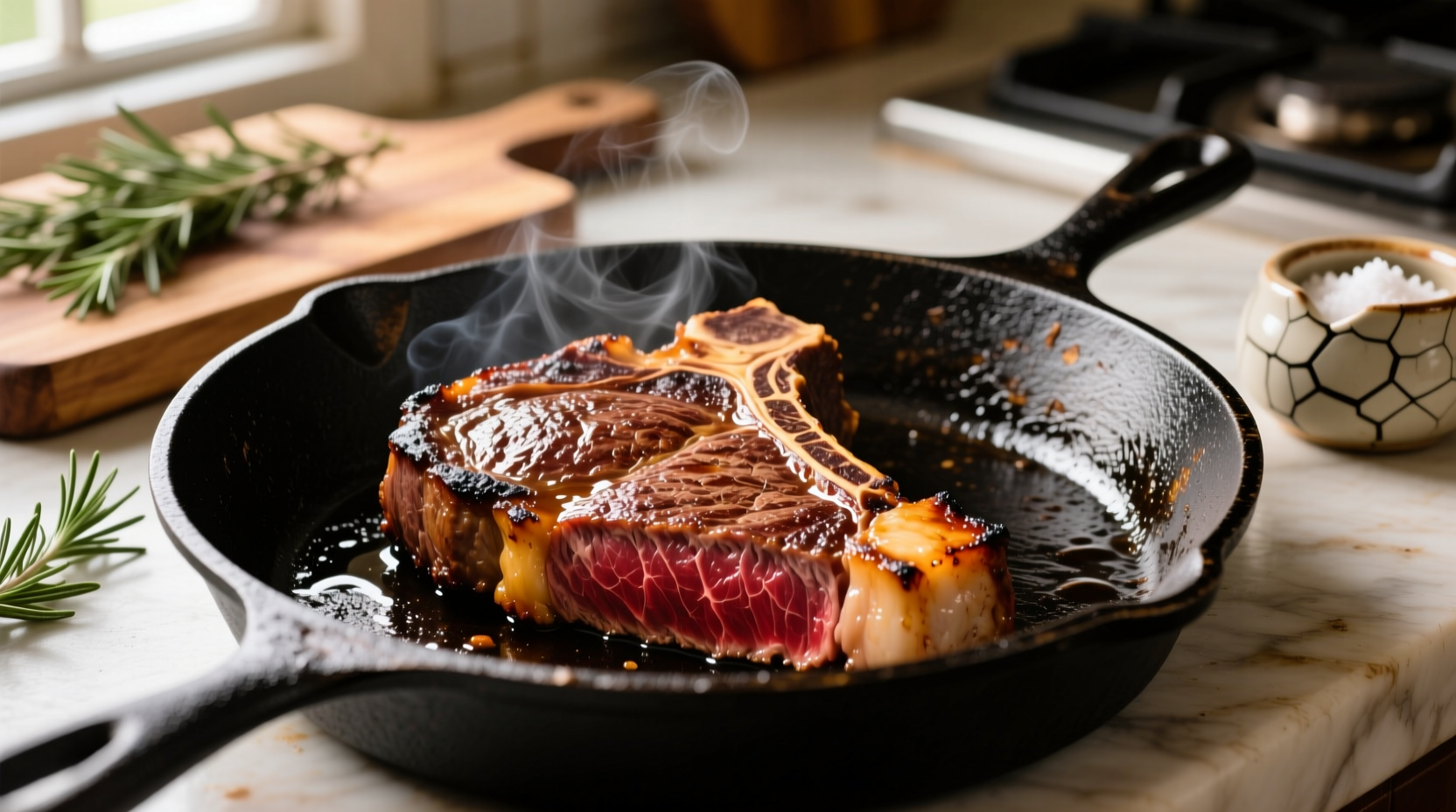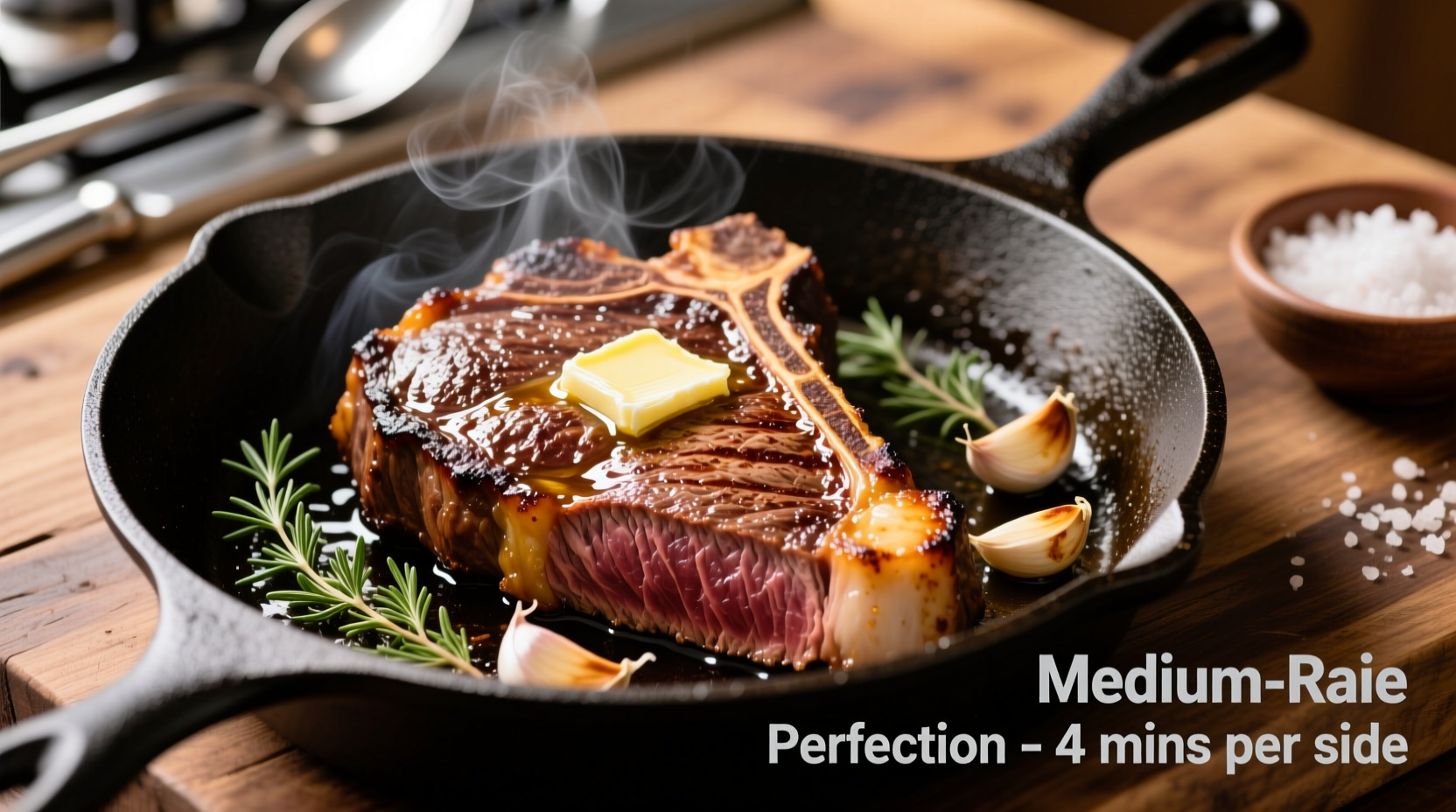Here's the direct answer: To cook the perfect steak in a frying pan, use a thick-cut steak (1-1.5 inches), bring it to room temperature, season generously with salt and pepper, heat a heavy skillet (cast iron preferred) over medium-high heat until smoking, sear for 3-4 minutes per side, add butter and aromatics during the last 2 minutes, then rest for 5-10 minutes before slicing. This method creates a flavorful crust while maintaining a juicy interior.
Why This Frying Pan Steak Method Works Every Time
Cooking steak in a frying pan seems simple, but achieving that perfect sear with a juicy interior requires precise technique. Most home cooks make critical mistakes—using thin steaks, skipping the rest period, or disturbing the steak too soon. Our method solves these problems by focusing on temperature control, proper searing technique, and strategic resting.
Steak Selection: The Foundation of Success
Your steak choice directly impacts results. Thicker cuts (1-1.5 inches) provide the necessary buffer between exterior sear and interior doneness. Thin steaks overcook before developing proper crust. The USDA recommends choosing steaks with visible marbling for optimal juiciness during high-heat cooking.
| Steak Cut | Ideal Thickness | Cooking Time (Medium-Rare) | Special Considerations |
|---|---|---|---|
| Ribeye | 1.25-1.5 inches | 4-5 minutes per side | High fat content requires careful monitoring |
| Filet Mignon | 1.5-2 inches | 3-4 minutes per side | Less fat means quicker cooking |
| New York Strip | 1-1.25 inches | 3.5-4.5 minutes per side | Even thickness ensures uniform cooking |
| Porterhouse | 1.5+ inches | 5-6 minutes per side | Manage two muscle types with different cooking rates |
The Science Behind the Perfect Sear
That beautiful brown crust isn't just for looks—it's the Maillard reaction, a chemical process where amino acids and sugars transform at 285°F (140°C). According to food science research from the University of California, Davis, this reaction creates over 600 flavor compounds that make steak irresistible. Your pan must reach this critical temperature before adding steak.
Step-by-Step Frying Pan Steak Method
Preparation Phase: Setting Up for Success
Remove steak from refrigerator 45-60 minutes before cooking. This critical step ensures even cooking—cold centers remain undercooked while exteriors overcook. Pat the steak completely dry with paper towels; moisture prevents proper searing. Season generously with coarse salt and freshly ground black pepper on all sides.
Pan Selection and Heating
Choose a heavy-bottomed skillet—cast iron retains heat best, but carbon steel or heavy stainless steel work too. Avoid non-stick pans which can't reach necessary temperatures. Heat over medium-high for 5-7 minutes until a drop of water sizzles violently and evaporates instantly. This indicates proper 400-450°F temperature range.

Searing Technique: The Critical First Minutes
Place steak in pan away from you to avoid oil splatter. Do not move it for 3-4 minutes—this allows proper crust formation. Resist the urge to press down; this squeezes out precious juices. After the initial sear, rotate steak 90 degrees for attractive cross-hatch marks, then flip using tongs.
Finishing with Flavor Boosters
During the final 2 minutes of cooking, add 2 tablespoons butter, 2 crushed garlic cloves, and fresh rosemary or thyme sprigs. Tilt pan and spoon the melted butter continuously over the steak (basting) for enhanced flavor penetration. For thicker cuts, finish in a 400°F oven to reach desired internal temperature without over-browning the exterior.
Resting: The Non-Negotiable Step
Transfer steak to a cutting board or warm plate and rest for 5-10 minutes (longer for thicker cuts). This allows juices to redistribute—cutting too soon releases up to 35% of the steak's moisture according to Texas A&M University food science research. Tent loosely with foil to maintain temperature without steaming.
Troubleshooting Common Steak Problems
Problem: Steak sticks to the pan
Solution: Your pan isn't hot enough or you moved the steak too soon. Wait until it naturally releases.
Problem: Uneven cooking
Solution: Press thinner edges against the pan with tongs during the final minute to ensure even doneness.
Problem: Burnt exterior, raw interior
Solution: Pan was too hot or steak was too cold. Lower heat slightly and ensure proper room temperature preparation.
Advanced Techniques for Restaurant-Quality Results
For thicker cuts (over 1.5 inches), try the reverse sear method: cook in a 275°F oven until 10-15°F below target temperature, then sear in the pan for 60-90 seconds per side. This technique, recommended by the American Meat Science Association, ensures perfect edge-to-edge doneness.
Temperature control remains the most critical factor. Use an instant-read thermometer for accuracy—medium-rare hits 130-135°F, medium reaches 135-145°F. The USDA Food Safety and Inspection Service confirms these temperatures are safe for beef consumption when followed by proper resting.
Essential Equipment Checklist
- Heavy-bottomed skillet (cast iron preferred)
- Instant-read thermometer (Thermapen recommended)
- Metal spatula and tongs
- Cutting board with groove for juices
- Basting spoon











 浙公网安备
33010002000092号
浙公网安备
33010002000092号 浙B2-20120091-4
浙B2-20120091-4